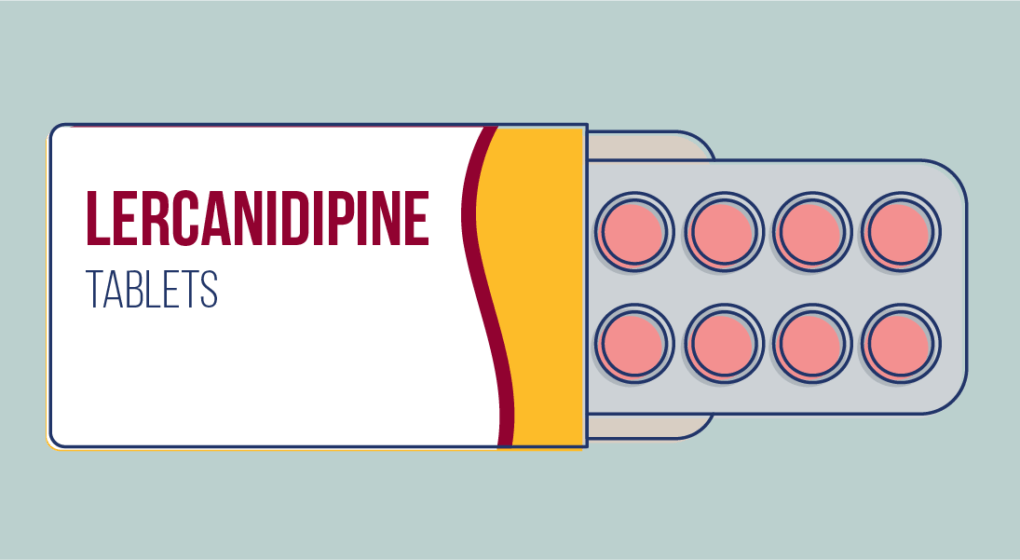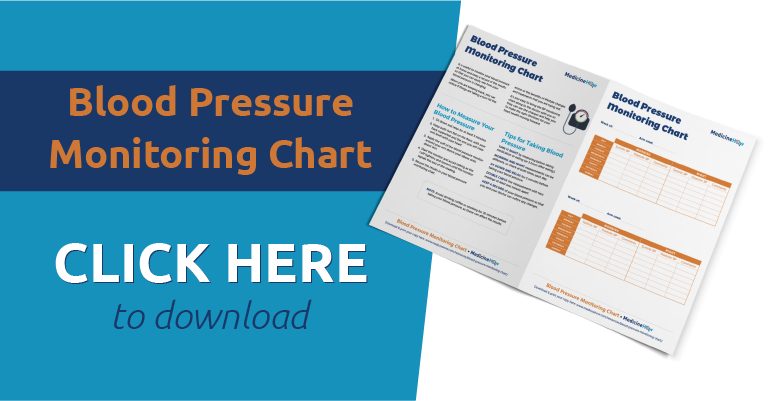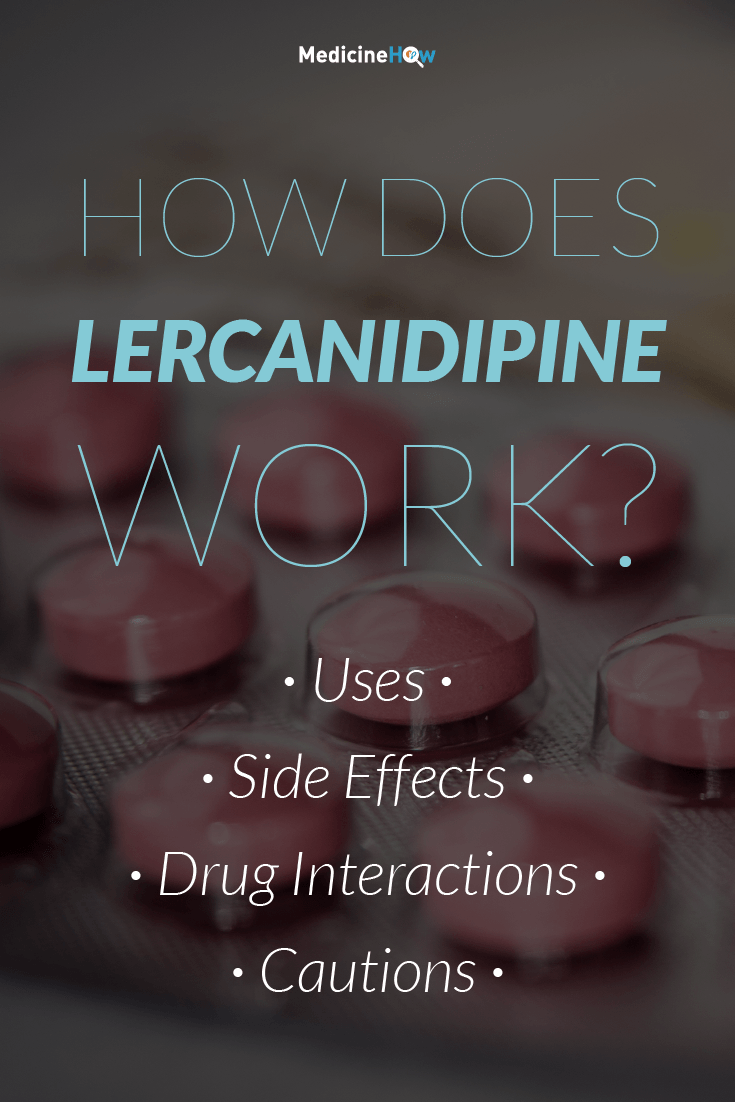
Lercanidipine is a type of drug called a calcium channel blocker, which works to reduce blood pressure by relaxing the muscles around the blood vessels. If you or someone you know is taking lercanidipine and you’d like to know more about how it works, this is for you.
Doses and Brand Names
![]() Lercanidipine is the generic name – the name of the actual drug component inside your medication. The brand name written on the packaging might be slightly different like:
Lercanidipine is the generic name – the name of the actual drug component inside your medication. The brand name written on the packaging might be slightly different like:
- Lercadip
- Lercan
- Zanidip
- Zircol
Each of these contain the same drug and work in the same, they are simply produced by different companies.
They come in two different doses of 10 mg and 20 mg. When starting amlodipine medication for the first time, it is best to begin with the lower dose of 10 mg and increase the dose to 20 mg if needed. This helps to decrease the risk of any side effects as your body adjusts to the drug.
Lercanidipine is also available in combination with enalapril in one tablet, known as Zan-Extra. This is available in several different doses, so that everyone can find the dose suited for them.

What type of drug is it?
![]() Lercanidipine is a type of drug called a dihydropyridine calcium channel blocker. This is a drug class that helps us to group drugs that work in a similar way together. Other drugs in the same class are:
Lercanidipine is a type of drug called a dihydropyridine calcium channel blocker. This is a drug class that helps us to group drugs that work in a similar way together. Other drugs in the same class are:
Lercanidipine is a special type of calcium channel blocker, called a dihydropyridine calcium channel blocker. This simply means that is has a more profound effect on the blood vessels and less on the heart in the way that it works.
How does Lercanidipine work?
![]() Lercanidipine is used to manage hypertension because it is very effective at reducing the blood pressure in the body.
Lercanidipine is used to manage hypertension because it is very effective at reducing the blood pressure in the body.
In the same way as other calcium channel blockers, it stops calcium from entering into the smooth muscle cells that surround the blood vessels. Calcium is usually needed to allow the muscles to contract and stay firm around the blood vessels.
Why is this a good thing for someone with hypertension? Because the blood vessels can actually expand a little bit as these muscles relax, allowing the blood to flow through more easily. This decreases the blood pressure and puts less pressure on your heart.
It’s kind of like putting your hand into a glove the right size, rather than trying to squeeze it into one a few sizes too small. It’s much easier for your heart to pump blood around your body and you are less likely to experience cardiovascular problems.
Side Effects
![]() The most common side effects of lercanidipine happen because the drug is working too well – instead to high blood pressure, you end up with low blood pressure. Signs of low blood pressure are:
The most common side effects of lercanidipine happen because the drug is working too well – instead to high blood pressure, you end up with low blood pressure. Signs of low blood pressure are:
- Headache
- Tiredness
- Dizziness
- Flushing
If you notice these signs, it is likely that the dose of lercanidipine is too high. It is best for you to discuss this with your doctor, who will help you to find the right dose.
Sometimes it can also cause retention of fluid in your body, such as in your ankles making them appear swollen. This is called oedema and usually means the lercanidipine dose is too high – if you notice this, talk to your doctor as soon as possible about your symptoms.
Cautions
![]() Lercanidipine is supposed to be taken long-term to help you to control your blood pressure. If you stop taking it suddenly, the smooth muscles around your blood vessels will suddenly be able to contract again and will tighten to cause rebound hypertension.
Lercanidipine is supposed to be taken long-term to help you to control your blood pressure. If you stop taking it suddenly, the smooth muscles around your blood vessels will suddenly be able to contract again and will tighten to cause rebound hypertension.
Instead, you should gradually reduce the dose over time to allow your body time to readjust. For example, if you are currently taking 20 mg, your doctor might reduce your dose to 10 mg and then you can take half a 10 mg tablet (5 mg) for some time before stopping completely.
You might also find that lercanidipine affects your mental coordination, making you feel more tired than usual and lack alertness. If this happens to you, avoid driving or operating heavy machinery, as the consequences if you lose concentration could be disastrous.
Some normal foods can also interact with felodipine in your body and change the effect it has. A good example of this is grapefruit juice. If you like grapefruit, you don’t need to avoid it completely, but should be aware it can change the way the drug works and keep an eye out for side effects. A glass each day is likely to be okay, but suddenly drinking a liter in one day might be asking for trouble.
Drug Interactions
![]() When you take lercanidipine together with other drugs the way they work can interact, changing the effect they have on your body. Lercanidipine can interact with:
When you take lercanidipine together with other drugs the way they work can interact, changing the effect they have on your body. Lercanidipine can interact with:
- Cyclosporin and lercanidipine concentration can both increase when taken together, leading to toxicity and other side effects. It is best to avoid this combination or to take cyclosporine at least 3 hours after lercanidipine.
- Ketoconazole increases the concentration of lercanidipine and may lead to side effects, such as hypotension. If this occurs, simply reducing the dose of lercanidipine usually helps.
- Metoprolol can decrease the concentration of lercanidipine and stop it from working properly. Simply increasing the dose of lercanidipine can overcome this issue.
Special Cases
![]() When lercanidipine enters your body, your body realizes that it isn’t usually there and tries to get rid of it – this is why you need to take a tablet each day. Your body processes it by changing it with a chemical reaction in the liver and then excreting it in your urine.
When lercanidipine enters your body, your body realizes that it isn’t usually there and tries to get rid of it – this is why you need to take a tablet each day. Your body processes it by changing it with a chemical reaction in the liver and then excreting it in your urine.
Both your liver function and kidney function is very important for processing amlodipine. If you have hepatic impairment or renal impairment, you may not be able to process the drug as efficiently as usual. For some people simply taking a lower dose is enough to address this, but for some people a different choice of drug might be a better option.
Lercanidipine is a good choice of drug for people with heart failure that are at high risk of stroke, but may not be the best option for someone with heart failure. It takes a long time to be cleared from the body, which is not preferable for someone that has a history or risk of heart failure.

Pregnancy and Breastfeeding
![]() If you are pregnant, breastfeeding or planning to become pregnant in the future, taking lercanidipine is not recommended. Why?
If you are pregnant, breastfeeding or planning to become pregnant in the future, taking lercanidipine is not recommended. Why?
For pregnant women it can cause maternal hypotension, which can mean your unborn baby won’t get enough oxygen supply from the blood flow you provide. For women who are breastfeeding, the drug is excreted in breast milk and is likely to affect your baby. For this reason, it is not usually used by breastfeeding women and there is no research say if it is safe or not. As an alternative, nifedipine is often used for breastfeeding women.


